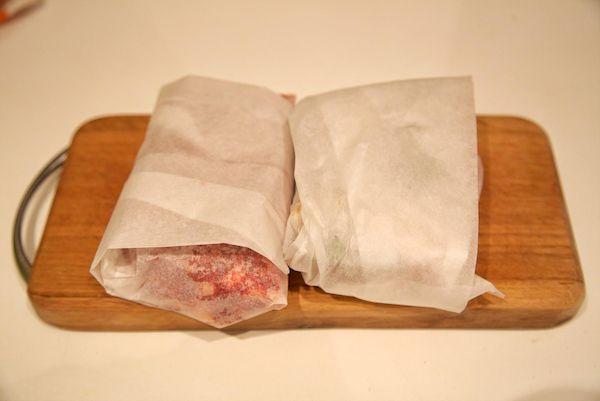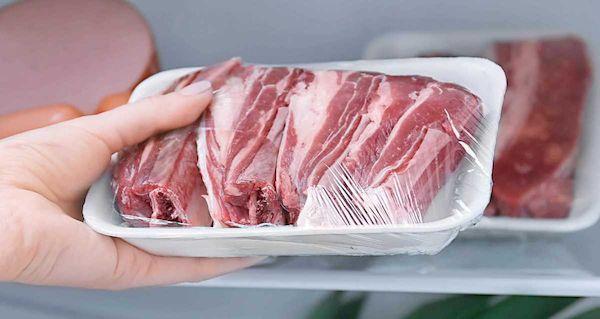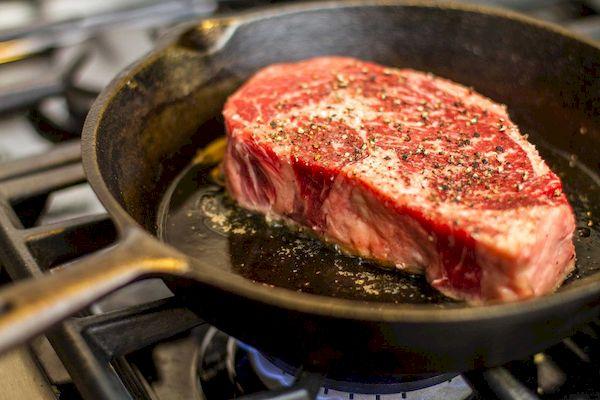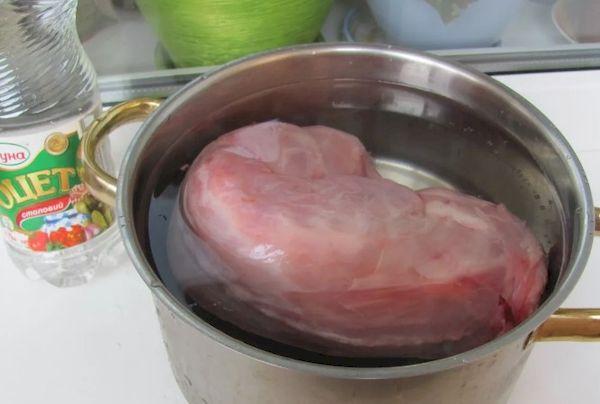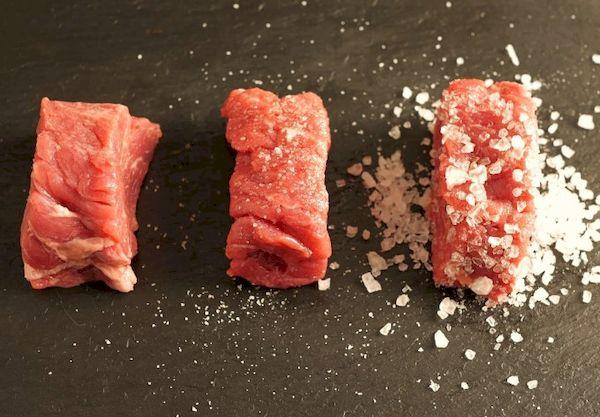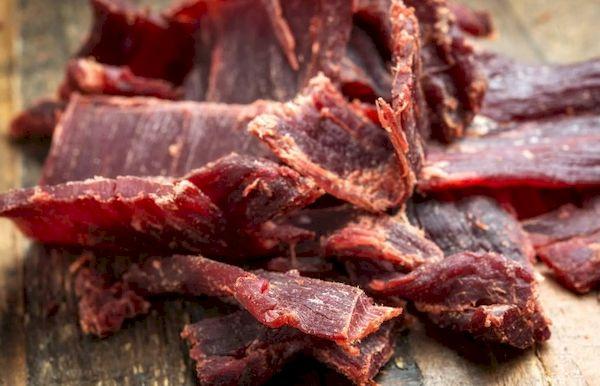How to preserve meat without refrigeration?
Content:
We can only roughly say how long meat can be stored without refrigeration – 2-6 hours. Much depends on the temperature in the room (outdoors), whether it is beef or pork, veal, rabbit, chicken, a large piece or minced meat.
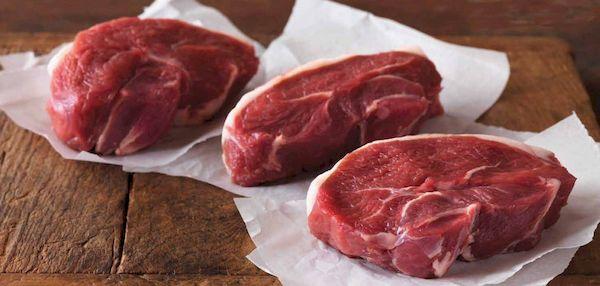
Cooked, frozen, vacuum-packed meat is stored 1.5-2 times longer than chilled raw meat. If your refrigerator is broken or you are going on a picnic, it is useful to know how to preserve meat. Using a variety of seasonings, plants and devices, you can significantly increase the shelf life.
How long can it be stored without refrigeration?
Meat is a very special product. It is characterized by a heterogeneous structure, multicomponent composition, high biological activity and the ability to change its properties under the influence of external factors.
It is recommended to store meat refrigerated. Without a refrigerator, it is necessary to maintain the temperature no higher than +7 degrees in another way (pre-cooling and using ice, a cellar, a thermal package, etc.).
The degree of preservation of meat and its safety during consumption depend on compliance with the recommended storage conditions. Cold allows you to preserve taste, nutritional and technological properties. It slows down microbiological, physicochemical and biochemical processes. Without a refrigerator, at high temperatures, the growth of microorganisms is activated, and the activity of enzymes in tissues increases. If the product begins to deteriorate, it will be impossible to save it.
To understand how long meat can be stored without refrigeration, check out the table:
| Type of meat | Storage temperature, °C | Shelf life |
| in carcasses, chilled | -1 | beef – 16 days
pork – 12 days |
| in carcasses, chilled | 0…+6 | up to 3 days |
| parts, chilled | +2…+6 | beef – 3-4 days
veal, pork – 2-3 days |
| chopped, minced, chilled | +2…+6 | 3-12 hours |
| lump, packaged | +4…+8 | up to 36 hours |
| roast | +4…+8 | up to 48 hours |
| smoked | +4…+8 | up to 72 hours |
| boiled, including sausages, rolls, hams, boiled chicken, dumplings | +4…+8 | Up to 24 hours |
| sliced sausage, ham, without packaging | +4…+8 | up to 3 hours |
| cooked minced meat, cabbage rolls | +4…+8 | up to 6 hours |
| for kebabs, cold cuts without sauces and spices | +2…+6 | 36 hours |
| for kebabs, cold cuts with spices and sauce | +2…+6 | 1 day |
| cutlets, steaks, cooked meatballs | +2…+6 | 1 day |
| boiled sausage, sausages, boiled sausages | +2…+6 | 3 days |
*These terms were established for catering establishments in the USSR on the basis of long, thorough research.
How to save for a short time
A refrigerator is a convenient device for keeping food fresh. But there are other ways to stay cool. Depending on where you are, you can use:
- Cellar, pantry. Remember that it is coldest in a room near the floor. There is no need to leave meat on the top shelves.
- A large barrel, a bucket of water.Hermetically sealed meat is placed on the bottom (weighted or pressed down).
- A river, stream, stakes or other body of water. Meat products need to be well packaged and take a reliable and heavy load that will not be carried away by the current.
- A deep hole. You need to dig a hole to a depth of at least 35 cm. Place the food in secure packaging and bury it. The greater the depth, the lower the temperature and the longer the shelf life.
- Pre-freezing or sub-freezing. Frozen meat products take 2 to 24 hours to thaw and stay cold longer. But due to the release of juice after defrosting, they may disappear faster. Frozen meat (frozen only in the upper layers) has a better taste and is more stable than chilled and frozen meat.
In winter, meat can be left outside or on an unglazed balcony, but to preserve it in summer, you need good shade. It is best to use shade from large trees. They do not heat up, unlike buildings and large stones.
Attention! When exposed to air and light, meat loses vitamins, so it is recommended to store it packaged and in the dark.
Vegetable oil and fat
If you have a cool place in mind with a temperature of up to +6 degrees, you can store meat as follows:
- Grease parchment paper with vegetable oil (fat).
- Wrap the pieces in separate sheets.
- Wrap the top with more greased parchment.
- You can add spices: pepper, herbs, garlic.
The meat will become aromatic and tender. The shelf life in the cold will increase by 3-4 days.
Heat treatment
Boiled, fried and smoked meat is stored several times longer than chilled meat. In the absence of refrigeration equipment, heat treatment is considered the best way to extend the shelf life of the raw product.
Helpful Tips:
- It is better to store boiled meat without broth. Dry the piece for storage. You can freeze it.
- Fried meat should be stored separately from vegetables and side dishes. Don't pour sauce on it. Wrap in paper.
- Smoked meat stores well in fresh herbs. You can use cotton cloth soaked in a strong saline solution.
Ice
With ice, the shelf life of food increases significantly. If you use ice wisely, it will last for a day even in the summer heat. What to do:
- Freeze bottled ice. Ice melts more slowly in larger containers.
- Place meat products between 2-3 bottles of ice (or place on top).
- Use heat-saving material - a blanket, a terry towel, and foil on the outside.
Thermal package or thermal bag
In the summer, modern devices - thermal bags and thermal bags - help preserve meat for 3-6 hours or even a day. The first ones do not hold the cold so well, but they are also cheaper (from 100 rubles for a bag measuring 32 by 35 cm). A 20-liter thermal bag costs, on average, 1,200 rubles. Adviсe:
- Use cold accumulators. With them, food stays cold twice as long.
- Close the thermal bag (thermal bag) tightly. Do not open unless necessary.
- If you don't have a special cold accumulator, put a bottle of frozen drink or water in your bag (package). The effect will be almost the same.
- Place the thermal bag (thermal bag) in the shade. In a cool place, the devices keep the cold longer.
Milk
An ancient way to store meat is in milk. Need to:
- Wash the piece.
- Dry.
- Place in a container with fresh cold milk.
- The milk should completely cover the product.
- Close the lid tightly.
- Place in a dark and cool place.
- Store for no more than 48 hours.
Vinegar
Table vinegar inhibits the growth of bacteria.If you need to preserve meat in nature, you can do the following:
- Wash the whole piece with clean water.
- Dry with paper.
- Soak in 9% vinegar.
- Wrap in cotton cloth.
- Place in an airtight container.
- Place in the coolest and darkest place.
- Every 4-6 hours check the meat, drain the resulting liquid and repeat the procedure from the beginning.
Plants: nettle, horseradish, bird cherry, sorrel
Fresh herbs have certain preservative properties.
- Wrap raw meat in nettle, horseradish, bird cherry or sorrel leaves, washed from dust. Use thread to secure. Place in a cool place.
- Wrap each piece separately; if there is a lot of meat, place it in a hole with 10-15 cm layers of grass. Don’t forget to cover the storage with a 35 cm layer of turf.
This method is practiced by hunters. In a pantry pit among plants, meat can remain fresh for several days.
Honey
Use liquid honey. You can take candied honey, add a little water and melt it in a water bath. How to keep raw meat fresh without refrigeration:
- Coat the washed and dried pieces with a thick layer of honey.
- Place in an opaque container with a lid.
- Store in a cool place.
- Wash before cooking.
Lemon and cabbage
The method is well suited for storing rabbit and beef. How to store without refrigeration:
- Place lemon slices on clean and dry meat.
- Lightly beat off the cabbage leaves.
- Place on top.
- Turn over and place a layer of lemon and cabbage on the other side.
- Tie the workpiece with thread.
- Keep cool and dark.
How to preserve for a long time
To preserve meat for a long time, various processing methods are used:
- ambassador of raw materials;
- drying (dehydration);
- drying;
- conservation.
The choice of method depends on the conditions.For example, in the forest, hunters often dry or salt game. The carcasses must be gutted and bled, otherwise they will disappear in less than 7 hours. It is optimal to cut the meat into thin layers and hang it in the shade in a well-ventilated place. To protect against insects, a frame is made of branches and covered with mesh.
Pickling
You can salt the meat and extend the shelf life up to 80 days. How to do it.
- Dry method. Cut clean and dry meat into finger-thick pieces. Pour 2-3 cm of coarse table salt into the container in which it will ripen. Place the pieces in one layer. Then add 2 cm of salt. Alternate layers. Salt is added last. Corned beef should mature in a dark, cool place. It will be ready for use in 1 month.
- Using saline solution. You need to dissolve 150 g of salt in 500 ml of water. Cut the meat into pieces of 300-400 g. Leave for a day. Fill with fresh solution according to the same recipe. Store refrigerated away from sunlight.
Drying
Raw meat can be dried. Beef is especially suitable for these purposes. It contains a lot of iron and other useful microelements. Beef is softer than lamb and not as fatty as pork. There are several ways:
- In the dryer. Meat cubes up to 5 cm thick are sprinkled with salt, spices and dried at a temperature of 50-60 degrees for 12 hours.
- In the oven. The meat is dried on a wire rack at minimum temperature with the door ajar. Drying lasts for 2 hours with a break of 30 minutes until completely dry.
Attention! First you need to soak the meat for a day in a salty solution under pressure. You can add spices.
Sometimes they dry minced meat, rolled out in a layer, or boiled chicken. In nature, you can quickly dry game in the sun and wind, providing protection from insects.Dried meat in cans or vacuum packaging can be stored without refrigeration for up to six months.
Drying
You need to be careful with cold drying (drying). It is important to take a sufficient amount of salt - a natural preservative that suppresses the proliferation of microorganisms. Drying involves a loss of 30% moisture. That is, a piece of meat weighing 1 kg should weigh 700 g in total.
How to store meat without refrigeration for up to six months:
- Cut into large pieces (0.5-1 kg), remove fat, veins and films.
- Prepare a mixture of 1 part sugar and 4 parts salt at the rate of 1 kg of mixture per 1 kg of meat.
- Pour in the pieces, mix well, cover with film.
- Keep under pressure in a cool place for a day.
- Rinse quickly with running water and dry with napkins.
- Roll in spices, sprinkle with a little salt.
- Wrap in gauze and hang in a dark, cool and ventilated place.
Conservation
Canned meat lasts the longest without refrigeration - up to 3-4 years. If the refrigerator is broken and there is a lot of meat, this is the best option.
- Cut the meat into small pieces.
- Place in a saucepan with water, salt and add spices.
- Cook until it begins to break down into fibers.
- Pour boiling water over glass jars and place the stew inside.
- Roll up and cool under a blanket.
Question answer
How to understand what has gone bad?
Spoiled meat gives off an unpleasant odor. When cooked, it intensifies, white flakes appear, and the broth is opaque. Other signs of deterioration are a sticky layer on the surface, loss of elasticity, and dull color.
How to transport it correctly?
Frozen meat is considered the most stable (no more than 25%). If the journey is long, over 2 hours, it is correct to transport the meat in a thermal bag or thermal bag. You can use ice.Leave the bag in the cabin with the air conditioning running, do not use the trunk.
Each type of meat and meat product has its own expiration date. Raw meat does not require warm storage, only cold storage. Recommended storage conditions and shelf life are indicated on packages of semi-finished and canned foods. You can store meat without a refrigerator, but to do this you need to use other cold places and refrigeration devices.
If this is not possible, the product is canned, dried, dried, salted or simply cooked. Whatever method or recipe is chosen, you need to protect it from heat, sun and insects. Meat should not be eaten if there is the slightest suspicion of spoilage. Serious poisoning is possible - foodborne illness, salmonellosis, staphylococcal intoxication.
